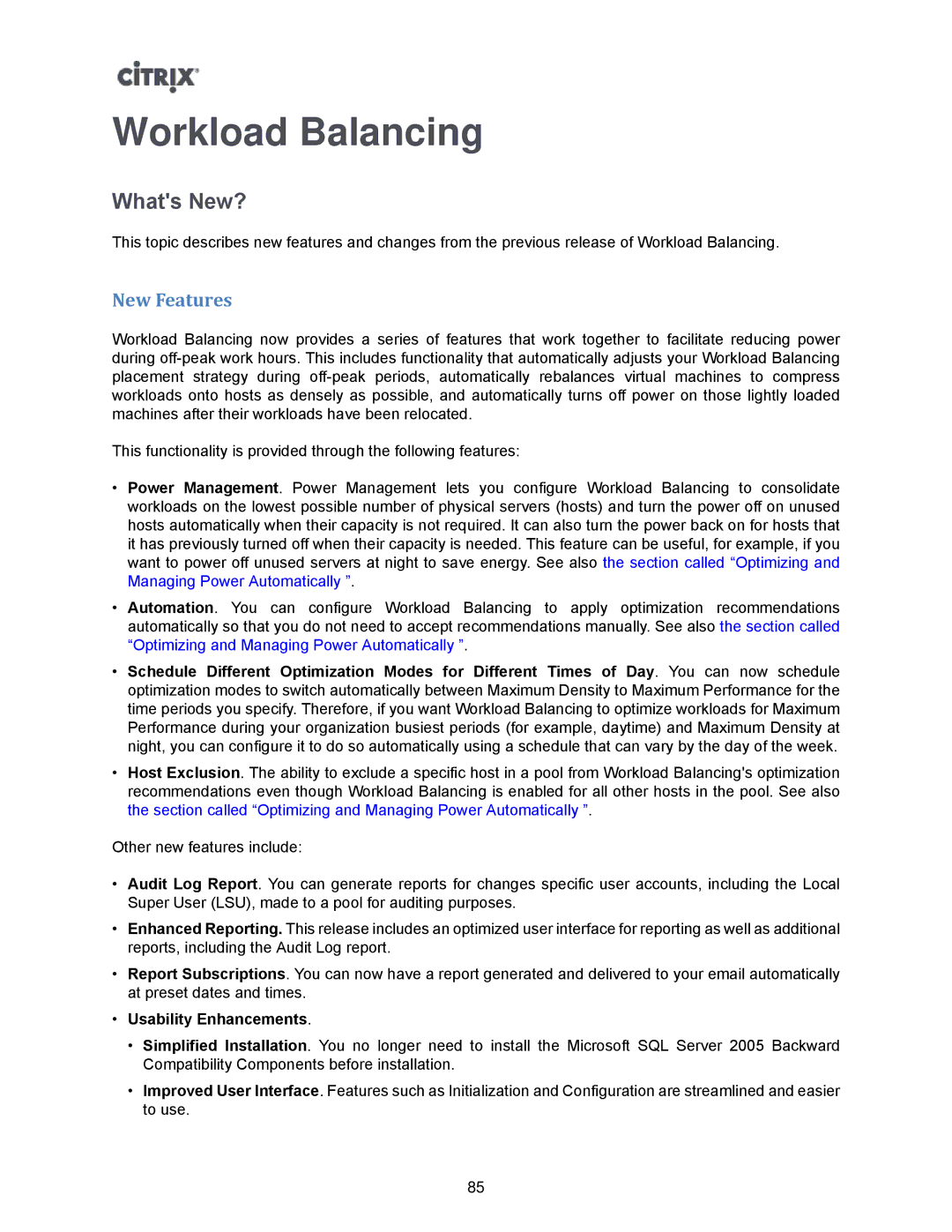Workload Balancing
What's New?
This topic describes new features and changes from the previous release of Workload Balancing.
New Features
Workload Balancing now provides a series of features that work together to facilitate reducing power during
This functionality is provided through the following features:
•Power Management. Power Management lets you configure Workload Balancing to consolidate workloads on the lowest possible number of physical servers (hosts) and turn the power off on unused hosts automatically when their capacity is not required. It can also turn the power back on for hosts that it has previously turned off when their capacity is needed. This feature can be useful, for example, if you want to power off unused servers at night to save energy. See also the section called “Optimizing and Managing Power Automatically ”.
•Automation. You can configure Workload Balancing to apply optimization recommendations automatically so that you do not need to accept recommendations manually. See also the section called “Optimizing and Managing Power Automatically ”.
•Schedule Different Optimization Modes for Different Times of Day. You can now schedule optimization modes to switch automatically between Maximum Density to Maximum Performance for the time periods you specify. Therefore, if you want Workload Balancing to optimize workloads for Maximum Performance during your organization busiest periods (for example, daytime) and Maximum Density at night, you can configure it to do so automatically using a schedule that can vary by the day of the week.
•Host Exclusion. The ability to exclude a specific host in a pool from Workload Balancing's optimization recommendations even though Workload Balancing is enabled for all other hosts in the pool. See also the section called “Optimizing and Managing Power Automatically ”.
Other new features include:
•Audit Log Report. You can generate reports for changes specific user accounts, including the Local Super User (LSU), made to a pool for auditing purposes.
•Enhanced Reporting. This release includes an optimized user interface for reporting as well as additional reports, including the Audit Log report.
•Report Subscriptions. You can now have a report generated and delivered to your email automatically at preset dates and times.
•Usability Enhancements.
•Simplified Installation. You no longer need to install the Microsoft SQL Server 2005 Backward Compatibility Components before installation.
•Improved User Interface. Features such as Initialization and Configuration are streamlined and easier to use.
85
